The Molecular Context of Vulnerability for CDK9 Suppression in Triple Wild-Type Melanoma
- PMID: 33745909
- PMCID: PMC8316294
- DOI: 10.1016/j.jid.2020.12.035
The Molecular Context of Vulnerability for CDK9 Suppression in Triple Wild-Type Melanoma
Abstract
Approximately half of melanoma tumors lack a druggable target and are unresponsive to current targeted therapeutics. One proposed approach for treating these therapeutically orphaned tumors is by targeting transcriptional dependencies (oncogene starvation), whereby survival factors are depleted through inhibition of transcriptional regulators. A drug screen identified a CDK9 inhibitor (SNS-032) to have therapeutic selectivity against wild-type (wt) BRAFwt/NRASwt melanomas compared with BRAFmut/NRASmut mutated melanomas. We then used two strategies to inhibit CDK9 in vitro-a CDK9 degrader (TS-032) and a selective CDK9 kinase inhibitor (NVP-2). At 500 nM, both TS-032 and NVP-2 demonstrated greater suppression of BRAFwt/NRASwt/NF1wt cutaneous and uveal melanomas than mutant melanomas. RNA sequencing analysis of eight melanoma lines with NVP-2 treatment demonstrated that the context of this vulnerability appears to converge on a cell cycle network that includes many transcriptional regulators, such as the E2F family members. The Cancer Genome Atlas human melanoma tumor data further supported a potential oncogenic role for E2F1 and E2F2 in BRAFwt/NRASwt/NF1wt tumors and a direct link to CDK9. Our results suggest that transcriptional blockade through selective targeting of CDK9 is an effective method of suppressing therapeutically orphaned BRAF/NRAS/NF1 wt melanomas.
Copyright © 2021 The Authors. Published by Elsevier Inc. All rights reserved.
Figures
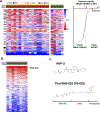
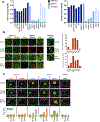
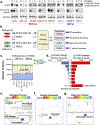
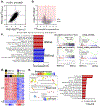
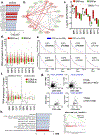
Similar articles
-
Melanoma with in-frame deletion of MAP2K1: a distinct molecular subtype of cutaneous melanoma mutually exclusive from BRAF, NRAS, and NF1 mutations.Mod Pathol. 2020 Dec;33(12):2397-2406. doi: 10.1038/s41379-020-0581-5. Epub 2020 Jun 1. Mod Pathol. 2020. PMID: 32483240 Free PMC article.
-
Integrative Exome and Transcriptome Analysis of Conjunctival Melanoma and Its Potential Application for Personalized Therapy.JAMA Ophthalmol. 2019 Dec 1;137(12):1444-1448. doi: 10.1001/jamaophthalmol.2019.4237. JAMA Ophthalmol. 2019. PMID: 31647501 Free PMC article.
-
[Characterization of genetic alterations in primary human melanomas carrying BRAF or NRAS mutation].Magy Onkol. 2013 Jun;57(2):96-9. Epub 2013 May 20. Magy Onkol. 2013. PMID: 23795354 Hungarian.
-
Targeted therapies in melanoma beyond BRAF: targeting NRAS-mutated and KIT-mutated melanoma.Curr Opin Oncol. 2020 Mar;32(2):79-84. doi: 10.1097/CCO.0000000000000606. Curr Opin Oncol. 2020. PMID: 31833955 Review.
-
A review of binimetinib for the treatment of mutant cutaneous melanoma.Future Oncol. 2017 Aug;13(20):1755-1766. doi: 10.2217/fon-2017-0170. Epub 2017 Jun 7. Future Oncol. 2017. PMID: 28587477 Review.
Cited by
-
Targeting CDK9 with selective inhibitors or degraders in tumor therapy: an overview of recent developments.Cancer Biol Ther. 2023 Dec 31;24(1):2219470. doi: 10.1080/15384047.2023.2219470. Cancer Biol Ther. 2023. PMID: 37272701 Free PMC article. Review.
-
NVP-2, in combination with Orlistat, represents a promising therapeutic strategy for acute myeloid leukemia.Cancer Biol Ther. 2025 Dec;26(1):2450859. doi: 10.1080/15384047.2025.2450859. Epub 2025 Jan 12. Cancer Biol Ther. 2025. PMID: 39800696 Free PMC article.
-
Unique vulnerability of RAC1-mutant melanoma to combined inhibition of CDK9 and immune checkpoints.Oncogene. 2024 Mar;43(10):729-743. doi: 10.1038/s41388-024-02947-z. Epub 2024 Jan 19. Oncogene. 2024. PMID: 38243078 Free PMC article.
-
OTUD1 promotes hypertensive kidney fibrosis and injury by deubiquitinating CDK9 in renal epithelial cells.Acta Pharmacol Sin. 2024 Apr;45(4):765-776. doi: 10.1038/s41401-023-01192-6. Epub 2023 Dec 18. Acta Pharmacol Sin. 2024. PMID: 38110583 Free PMC article.
-
SNS-023 sensitizes hepatocellular carcinoma to sorafenib by inducing degradation of cancer drivers SIX1 and RPS16.Acta Pharmacol Sin. 2023 Apr;44(4):853-864. doi: 10.1038/s41401-022-01003-4. Epub 2022 Oct 19. Acta Pharmacol Sin. 2023. PMID: 36261513 Free PMC article.
References
-
- Alla V, Engelmann D, Niemetz A, Pahnke J, Schmidt A, Kunz M, et al. E2F1 in melanoma progression and metastasis. J Natl Cancer Inst 2010;102(2):127–33. - PubMed
-
- Brahmer JR, Drake CG, Wollner I, Powderly JD, Picus J, Sharfman WH, et al. Phase I study of single-agent anti-programmed death-1 (MDX-1106) in refractory solid tumors: safety, clinical activity, pharmacodynamics, and immunologic correlates. Journal of clinical oncology : official journal of the American Society of Clinical Oncology 2010;28(19):3167–75. - PMC - PubMed
Publication types
MeSH terms
Substances
Grants and funding
LinkOut - more resources
Full Text Sources
Other Literature Sources
Medical
Research Materials
Miscellaneous

